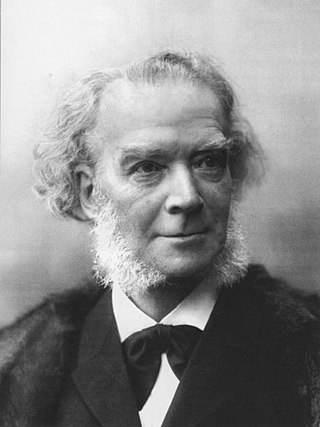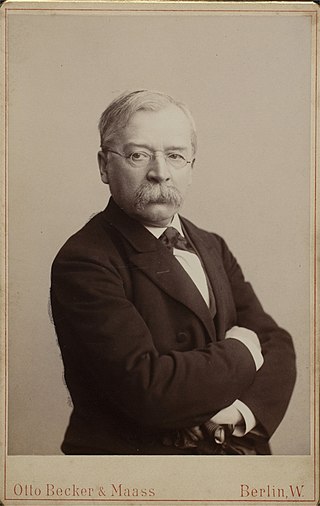
The String Quartet No. 1 in F major, Op. 18, No. 1, was written by Ludwig van Beethoven between 1798 and 1800, published in 1801, dedicated to the Bohemian aristocrat Joseph Franz von Lobkowitz. It is actually the second string quartet that Beethoven composed.

Carl Heinrich Carsten Reinecke was a German composer, conductor, and pianist in the mid-Romantic era.
The Symphony in C major by German composer Robert Schumann was published in 1847 as his Symphony No. 2, Op. 61, although it was the third symphony he had completed, counting the B-flat major symphony published as No. 1 in 1841, and the original version of his D minor symphony of 1841. It is dedicated to Oscar I, king of Sweden and Norway.

Woldemar Bargiel was a German composer.
Songs Without Words is a series of short lyrical piano works by the Romantic composer Felix Mendelssohn written between 1829 and 1845. His sister, Fanny Mendelssohn, and other composers also wrote pieces in the same genre.
Hyacinthe Jadin was a French composer who came from a musical family. His uncle Georges Jadin was a composer in Versailles and Paris, along with his father Jean Jadin, who had played bassoon for the French Royal Orchestra. He was one of five musical brothers, the best known of whom was Louis-Emmanuel Jadin.
Franz Ries was a Romantic German violinist and composer, son of Hubert Ries. He studied at the Paris Conservatory. He also worked in the publishing business.
The String Quartet No. 1 in E-flat major, Op. 12, was composed by Felix Mendelssohn in 1829, completed in London on September 14 and possibly dedicated to Betty Pistor, a neighbor and the daughter of a Berlin astronomer.
The String Quartet No. 2 in A minor, Op. 13, was composed by Felix Mendelssohn in 1827. Written when he was 18 years old, it was, despite its official number, Mendelssohn's first mature string quartet. One of Mendelssohn's most passionate works, the A minor Quartet is one of the earliest and most significant examples of cyclic form in music.

The String Quartet No. 3 in D major, Op. 44, No. 1, was composed by Felix Mendelssohn(1809-1847) in July 1838 at the age of 29. It premiered in 1839, then was published later in 1840. It is a traditional quartet, comprising two violins, a viola, and a cello. The piece is part of the Op. 44 set of 3 string quartets that Mendelssohn dedicated to the Crown Prince of Sweden.
The String Quartet No. 4 in E minor, Op. 44, No. 2, was composed by Felix Mendelssohn in 1837, and revised in 1839.
The String Quartet No. 5 in E-flat major, Op. 44, No. 3, was composed by Felix Mendelssohn in 1837–1838 and completed on February 6, 1838. The piece is part of the Op. 44 set of 3 string quartets that Mendelssohn dedicated to the Crown Prince of Sweden.
The String Quintet No. 2 in B flat major, Op. 87, was composed by Felix Mendelssohn in 1845, when Mendelssohn was around 36 years old. The piece is scored for two violins, two violas and cello.
Felix Mendelssohn's Cello Sonata No. 2 in D major, Op. 58, was composed in late 1842 — first half of 1843. The main theme of the first movement is a reworking of an unrealised Piano Sonata in G major. The Cello Sonata, which was dedicated to the Russian/Polish cellist Count Mateusz Wielhorski, has four movements:
- Allegro assai vivace
- Allegretto scherzando
- Adagio
- Molto allegro e vivace
Felix Mendelssohn's Piano Quartet No. 2 in F minor, Op. 2, for piano, violin, viola and cello was published in 1823, a year after his first Piano Quartet No. 1 in C minor, Op. 1. This work was dedicated to Carl Friedrich Zelter, who became Mendelssohn's composition and music tutor starting at the age of eight years old. Zelter would take Mendelssohn on trips to go see Johann Wolfgang von Goethe, who was also an important figure in Mendelssohn's life when it came to the composition of his earliest pieces between the years 1821-1825. Mendelssohn's three piano quartets were the first piano quartets he composed and published. He composed the second quartet at the age of only 14 years.
The six string quartets, K. 168–173, were composed by Wolfgang Amadeus Mozart in late 1773 in Vienna. These are popularly known as the Viennese Quartets. Mozart may have hoped to have them published at the time, but they were published only posthumously by Johann André in 1801 as Mozart's Op. 94.
Felix Mendelssohn wrote thirteen string symphonies between 1821 and 1823, when he was between 12 and 14 years old.. These symphonies were tributes to Classical symphonies especially by Joseph Haydn, Johann Christian Bach, Carl Philipp Emanuel Bach, and Wolfgang Amadeus Mozart.
Joseph Haydn's String Quartets, Op. 64, is a set of six string quartets composed in 1790. Along with six earlier quartets published under the opus numbers 54 and 55, they are known as the Tost quartets, after the Hungarian violinist and later merchant Johann Tost who helped Haydn find a publisher for the works. Unlike the earlier quartets, Haydn actually dedicated the Op. 64 set to Tost in gratitude for his efforts.





